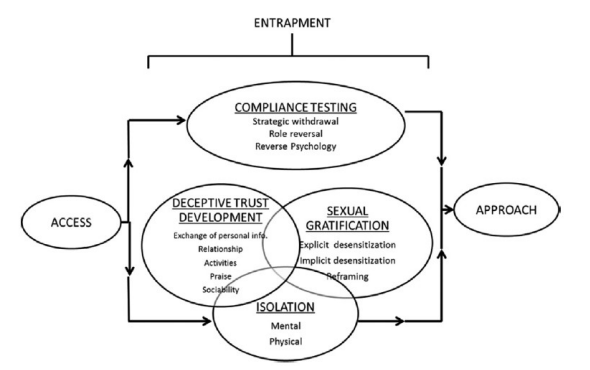Nowadays, the Internet is a full-fledged component of the life of children and adolescents. Social media, online messengers, and video hostings offer platforms for communication, content consumption, and creation for a young audience; that is what attracts them. Unfortunately, where there are children and adolescents, groomers and child predators eventually appear. Some children have already become victims of online grooming, many are in danger, and COVID-19 lockdowns have exacerbated the situation (Figure 1). According to Lepper (2021), “there had been an increase in online child sexual abuse crimes globally” (para. 3). Therefore, teachers must educate the younger generation on Internet safety rules. These measures are necessary to preserve children’s happiness and improve their self-esteem (Click & Parker, 2011). A project and lesson plan on Internet safety for middle school students will be presented in this work.
Internet Safety Project
As noted above, the intended school age group is middle schoolers, namely children who are 11 to 13 years old. This internet safety learning activity is of didactic and active nature and belongs to the social developmental area. The didactic approach is an efficient way of presenting information, and active learning develops the knowledge that students have received further (Planning and developing learning activities, n.d.). There is an introduction at the beginning of the lesson where the teacher discusses with the students about the Internet and asks them about the things they do in the online space, gradually introducing the topic of online safety. Then the central part goes where the teacher lectures the children about the rules of online safety with the help of PowerPoint bullet points and images. The final piece is a simple test where the learners must show whether they have learned the information received. The required materials in this project are a classroom projector and test forms.
Lesson Plan
Preamble
The teacher asks the children what online content they like and what apps and websites they use. When everyone has exchanged their views, the teacher asks the students if they know Internet safety rules and who should be avoided in the online space. The introductory section should take about ten minutes, 12 minutes maximum. After everyone has answered, the lecture on the online safety part begins.
Main part
The central part of the lesson is a lecture on Internet safety rules regarding online grooming. Here, the teacher explains how to identify strange behaviors (Figure 2), avoid, block, and report potential online groomers, and which popular online platform is the most dangerous for children. While lecturing, the teacher also uses the classroom projector to display relevant bullet points and images. The main section should be 18 to 20 minutes long.

Note. The diagram shows an increase in online grooming in the last two years. From “Pandemic sparks ‘perfect storm’ for increase in online child sexual abuse,” by J. Lepper, 2021, Children & Young People Now, para. 3. Copyright 2021 by MA Education.

Note. The image shows the flow of online grooming discourse and its variations. From “’So is your mom as cute as you?’: Examining patterns of language use in online sexual grooming of children,” by N. Lorenzo-Dus and A Kinzel, 2019, Journal of Corpora and Discourse Studies, 2, p. 17. Copyright 2019 by the authors.
Final section
The last part of the lesson includes students taking an internet safety test. The test consists of five to seven items, which are multiple-choice questions. Students must choose one single correct answer. The test section of the lesson should take seven minutes. When all students have completed the test, the teacher checks the results. Checking test results should also take no more than seven minutes. Students who have answered incorrectly more than half of the questions and have difficulty understanding the topic should be allowed to re-take the test later.
References
Click, P. M., & Parker, J. (2011). Caring for school-age children. Cengage Learning.
Lepper, J. (2021). Pandemic sparks ‘perfect storm’ for increase in online child sexual abuse. Children & Young People Now. Web.
Lorenzo-Dus, N., & Kinzel, A. (2019). ‘So is your mom as cute as you?’: Examining patterns of language use in online sexual grooming of children. Journal of Corpora and Discourse Studies, 2, 15-39. Web.
Planning and developing learning activities. (n.d.). Boise State University. Web.
